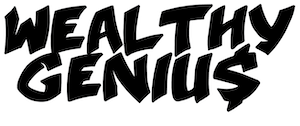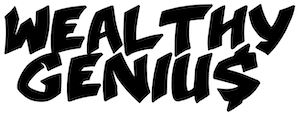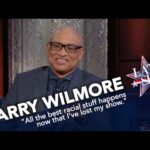About Mas Oyama
Mas Oyama (大山 倍達), also known as Masutatsu Yama, was a karate teacher who developed Kyokushin Karate. He was born Choi Yeong-eui on July 27, 1923, and died on April 26, 1994. His estimated net worth was $1 million. Oyama, the creator of Kyokushin Karate, is credited with creating the first and most significant full contact karate style.
- Date of Birth and Life Span: Masatatsu Oyama (Mas) was born on July 27, 1923 in Gimje, Jeollabuk-do, Korea. His birth name was Choi Young-Eui. He died on April 26, 1994 in Tokyo, Japan at the age of 70 from lung cancer. Oyama was a non-smoker.
Masatatsu Oyama engaged in bull fighting. He might have faced off against Black Cobra, a fantastic Muay Thai fighter. During a trip of the United States, he undoubtedly engaged in exhibition battles against American wrestlers and spent more than a year in the highlands practicing karate. In the end, he became well-known as the creator and father of Kyokushin Karate, maybe the first full-contact karate style in history.
But even more than that, when you look closely at his life, you can see that he was a risk-taker who lived without concern for the worst-case scenario. Take into account the next remark before reading on to learn more about his life.
“You won’t need to regret the results of what you accomplish if you believe in your own words, aspirations, thoughts, and activities and give it your all. The individual who makes little effort in the hopes that everything would turn out exactly as he wishes is often filled with fear and trepidation.”
Young Years
Think of Oyama’s life as being comparable to martial arts history in general. His life has been sensationalized over time through comics, films, a lack of documentation, the passage of time, and other means. As a result, there could be a defense for almost every assertion made about him. Nevertheless, the general consensus regarding his formative years is as follows.
In Gimje, South Korea, under the Japanese rule, Oyama was born Choi Young-Eui. He belonged to a family of seven children, the fourth son of Sun Hyung (6 boys and 1 girl). At the tender age of nine, he was transferred to live on his sister’s farm in Manchuria. He reportedly had to travel daily a distance of roughly six miles on a narrow road to get to Yongree Primary School.
When Oyama relocated to Manchuria at the age of nine, a seasonal Korean worker named Lee introduced him to martial arts. He left for Korea at the age of 12, having made significant progress with Lee.
Oyama followed in his brother’s footsteps and traveled to Japan in March 1938 when he was 15 years old to enroll at the Yamanashi Youth Aviation Institute. He was compelled to select a Japanese name while there. He settled in Oyama Masutatsu, which is a translation of the name “Baedal” (). During Oyama’s reign, the ancient Korean state of Baedal was referred to in Japan as “Ancient Joseon” Japanese speakers can pronounce “Masutatsu” as “baitatsu.”
Why study to be a pilot in Japan? Kanji Ishihara was a Japanese General whom Oyama admired and wished to emulate. Oyama had witnessed firsthand in Korea the invasion of Asian neighbors, and Ishihara was opposed to it. Unfortunately for Ishihara, not everyone shared his opinions, and it is said that the Japanese Army’s higher levels shunned him.
Oyama kept up his martial arts practice during this time, honing his skills in both judo and boxing.
Kamikaze Pilot
Oyama was determined to join the Imperial Army throughout the war and pursued this aim with zeal, maybe as a sign of things to come. Possibly as a result of his Korean heritage, he was turned down the first several times he applied to be a Kamikaze pilot. He did, however, finally write a message in the blood from his fingers and send it to the top army leaders. And it seems to work after that.
“The general realized I was prepared to serve after he saw that I had written with my own blood. I was meant to take off as a kamikaze the following week and never return to my native nation.” His jet broke down the day of his mission, his mission.
He concluded that the circumstances were far from random.
Oyama later remarked on a TV broadcast, “I had breakfast with my colleagues ready to serve our country. “The chairs were vacant when I went back for dinner later that night. There are no words to adequately express how I felt, but I am aware that I had a chance to act.”
Additional Martial Arts Instruction
Oyama departed the aviation school after the United States lost the Second World War. Obviously, this was a difficult time for the people of Japan, which made it possibly even more difficult for a foreigner like him. When he realized he was an unwelcome Korean who no one would even consider renting a place to, he started the “Eiwa Karate Research Center” in the Suginami ward but eventually shut it down. Eventually, he managed to secure housing in Tokyo, where he later met his wife.
Oyama began his studies at the Waseda University School of Education in 1946. He studied sport science there.
Oyama developed an interest in Okinawan karate after seeing a pupil doing it, so he got in touch with the Shotokan school. There, he started studying under Gigo Funakoshi, the second child of Gichin Funakoshi, the founder of the Shotokan. He frequently practiced alone, feeling alien in a strange world. Oyama enrolled at Takushoku University in Tokyo shortly after that and was granted admission to the dojo of Gichin Funakoshi (again, the founder of Shotokan). He trained there for two years before switching to So Nei Chu’s Goju-ryu karate.
He finally attained Goju-ryu 8th dan degree under Gogen Yamaguchi (the head instructor of Goju-ryu in mainland Japan).
In addition to the aforementioned, Oyama was guided to the Sone Dojo in Nakano, Tokyo, by judoka Masahiko Kimura. There, he trained for four years and attained the rank of 4th dan in kosen judo.
Mountain Isolation
Oyama frequently engaged in combat with the U.S. Military Police in Tokyo following World War II. Oyama mentioned this in an interview with “Itsumitemo Haran Banjyo” (Nihon Television).
“I had breakfast with many of my friends the morning before they left to become Kamikaze pilots, and by the time the evening rolled around, their chairs were empty. I became enraged after the war was over, so I engaged in combat with as many American soldiers as I could, until my picture covered the entire police station.”
So Nei Chu suggested that he seek solace on a lonely mountain given his unresolved fury. Oyama planned a three-year martial arts training stay at Mt. Minobu in Yamanashi Prefecture, Japan. He was accompanied by a student named Yashiro, who fled during the night. Oyama was only visited by a buddy once a month, which made him wonder about his choice. Nei Chu therefore suggested that Oyama shave off one eyebrow so that he would be too embarrassed to stand in front of people, helping him to stay the route, in response to a letter from Oyama revealing his doubt.
After 14 months, Oyama continued to live on the mountain, but he was forced to leave after his sponsor stopped helping him. He started to feel guilty that he hadn’t completed the three years he had intended to after winning the Karate Division of the Japanese Martial Arts Championships. As a result, he went back into seclusion on Japan’s Mt. Kiyosumi, where he lived and trained for 18 months.
Kyokushin Karate’s founding
According to several sources, Oyama established his own karate dojo in Tokyo called Oyama Dojo in the early 1950s (1953 or 1954). They began by practicing outside before eventually relocating to a ballet school behind Rikkyo University in 1956. The school and reputation grew as a result of martial arts displays. Along with this, Oyama relocated the dojo in 1964 into the structure that would later house the main dojo and global headquarters of the Kyokushin martial art. The International Karate Organization Kyokushin kaikan was formally established there (IKOK or IKO). This acted as the driving factor behind the expansion of the number of schools that taught the kyokushin system.
Oyama’s dojo faced opposition from Muay Thai practitioners in the same year that he launched the IKOK. Oyama sent his three students Kenji Kurosaki, Tadashi Nakamura, and Noboru Osawa to fight in Thailand because he thought his karate technique was the greatest. They won two of the three contests, enhancing the standing of Kyokushin (see Great Karate vs. Muay Thai fights for more on this and other battles between the styles).
Oyama hand-selected teachers and dispatched them to open schools both in Japan and overseas (the United States, Netherlands, England, Australia, and Brazil). This frequently came with promotion in the form of demonstrations. Additionally, he annually hosted the All-Japan Full Contact Karate Open Championships to aid with promotion. He once more displayed his confidence in his own fighting style by making it an open competition where practitioners of any martial arts system might participate.
The first karate style with full contact was possibly Kyokushin. Additionally, practitioners frequently participate in full-contact competitions where the use of gloves is frequently prohibited and only hand and foot strikes to the body are permitted. Kyokushin really professes to believe in strong blows intended to rapidly render an opponent helpless. Power is therefore seen as being very significant.
Mas Oyama’s Exploits
Because of Oyama’s popularity, some of these exploits may have been glorified, making it difficult to distinguish fact from fiction. But this is what we think or suspect.
Bullfighting: Oyama started bullfighting in the 1950s. When a bull struck him in the back during a bullfight in 1957, tearing him open, he was just 34 years old. There is no doubt that he actually engaged in a sizable number of bullfights. According to legend, he engaged 52 of them in combat, killing three of them and cutting off the horns of 49 others with a single shuto attack (chop with the side of the hand).
U.S. Fights/Demonstrations: Oyama visited the country in April 1952. He stayed there for a year, giving karate demonstrations in front of the general public and on television. He also took part in a number of exhibition fights against wrestlers, boxers, and others. According to legend, he faced 270 opponents and defeated them all, frequently with a single blow.
Fighting the Black Cobra of Muay Thai: Did Oyama engage in Muay Thai combat with a man known as the “Black Cobra”? The claim that he did is unsupported by any evidence. We do know that some claim he used an overhead triple kick to defeat this purportedly outstanding Thai fighter. According to some versions, he prevailed using body kicks to the round.
Oyama invented the 100 man kumite and was the first person to practice karate. In essence, kumite combat last between one and a half and two minutes between players. The goal is to win consecutive fights against opponents of comparable quality. Over the course of three days, Oyama finished the 100 man kumite three times, winning each match in between.
With branches in more than 100 countries and more than 12 million registered members, Oyama transformed his Tokyo-based International Karate Organization, Kyokushinkaikan, into one of the most prestigious martial arts organizations in the world. His colorful life was shown on the big screen in feature-length films, books by and about him were produced, and he was the subject of comic comics in Japan.
On April 26, 1994, in Tokyo, Japan, Oyama passed away from lung cancer at the age of 70. Mas Oyama had an estimated $1 million in wealth at the time of his passing.



